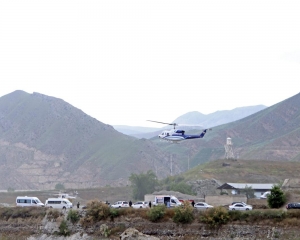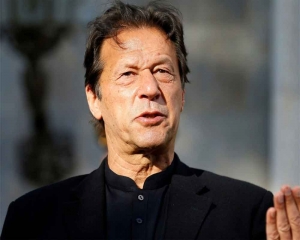India, a nation that did little to contribute to global warming is fully bearing the brunt of climate change. In the last few months India has been melting under soaring temperatures, and experts say it’s just the beginning. After facing calamitous cyclones like the Amphan, unforgiving floods in the south, and deadly landslides, north India is now challenged with a fatal heat wave. The headlines are all about climate change as extreme weather calamities are becoming more frequent, intense, and prevalent worldwide rather than rare occurrences like they once were.
Situation on the ground
While heatwaves in India are customary in the summer months of May and June, the sun struck early this year with March recording the highest ever average maximum temperatures in the last 122 years. The mercury steadily rose through April recording average highs of 35.3 degrees (95 F), with the nation’s capital New Delhi hitting record temperatures of 49 degrees (May 16th). While the northern states of Delhi, Uttar Pradesh, Haryana and Rajasthan are the worst affected, others such as Madhya Pradesh, Maharashtra, Odisha, Bihar and Jharkhand have consistently recorded soaring temperatures.
The Summer of 2022, has caused immense losses in the social, economic, and ecological spheres of India. The heatwave brought about the onset of the third-warmest April ever recorded, ushering a new reality in which intense heat waves are 30 times more likely to occur in India due to climate change. In this rapidly changing era, it is imperative to understand and study these extreme weather events, to prepare, form predictable patterns and develop strategies to combat them and mitigate their effects.
Besides the increasing carbon footprint, the heatwaves experienced in India have been largely attributed to atmospheric factors: rising surface temperatures in the Indian Ocean, absence of periodic rainfall, and weakened influence of western disturbances, customary at this time of year. The lack of pre-monsoon activity and anticyclones in the west, which cause warm, dry weather in summers by compressing winds around high-pressure systems have further intensified the extreme weather. The World Meteorological Organization (WMO) has described the timing, intensity, and frequency of such heatwaves as a role of climate change. This aligns with the predictions of the IPCC 2021 report of impending heat extremes and long, intense, and frequent heat waves unless drastic measures are taken collectively to curb greenhouse gas emissions.
Impact of the heat wave
After floods, heatwaves are the second most lethal calamity in India having claimed 41,333 deaths since 1967. This time the impacts were deeply felt by the adverse changes in agricultural, public, and animal health. Among the densely populated 1.3 billion, only 12 percent have access to air conditioning. The working class-millions comprising vendors, construction workers, and farmers alike were most vulnerable to lethal heatstrokes and prolonged heat-induced stress.
According to media reports, the current heatwave claimed at least 100 lives with 25 reported in Maharashtra itself, another state record. Moreover, shortages of coal led to power outages, compounding health impacts. An agricultural disaster for wheat yields ensued and there is an estimated 10-35 percent reduction in crop yields in Haryana, Uttar Pradesh, and Punjab.
Ecologically, there is an increased risk of forest fires and droughts. These effects pale before the disastrous economic losses and yet we are only skimming the surface of what’s still to come. According to a paper published in 2020 by the McKinsey Global Institute, the decrease in labor productivity, and lost labor hours ‘’due to rising heat and humidity could put about 2.5-4.5 percent of GDP at risk by 2023, equivalent to roughly 150-250 billion dollars’’.
The reason for these monumental losses is that extreme heat drastically diminishes the capacity of an individual to efficiently conduct outdoor work. Heat exposed work employs around 75 percent of the labor force (380 million people) and produces around 50 percent of GDP. The International Labor Organization states that due to extreme temperatures, there will be a projected loss of 6 percent in total working hours, equivalent to the loss of 3.4 crore full-time jobs.
Way out
In the past few years, India has been ravaged by climate change with traces all over the subcontinent. Every part of the nation has had to deal with global warming's veil, many with irreparable consequences. As the days get shorter and the nights get warmer, India has to fulfill the daunting task of meeting 50 percent of the country's energy requirements through renewable sources by 2030 as pledged in COP26.
The government's work is cut out. Reducing the carbon footprint, planting more trees, creating green buildings instead of concrete infrastructure which traps heat, besides efficient planning to mitigate the hardships of those in the fringes is key. As tensions rise, the undeniable truth emerges: It is now or never!
Auvi Mukherjee, a Gold award winner in the Queen's Commonwealth Essay Competition 2021, is a football enthusiast, a climate warrior and an occasional blogger. Along with a group of school friends, he also runs a website and an Instagram account highlighting the impact of climate change


























